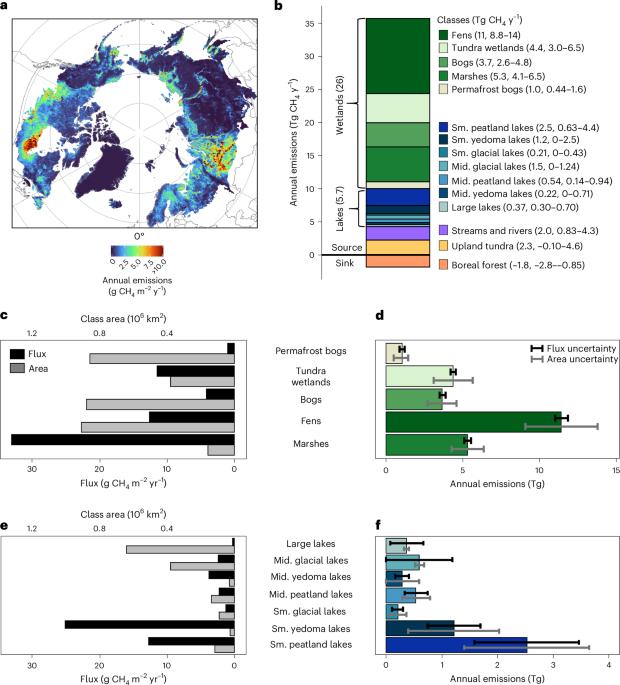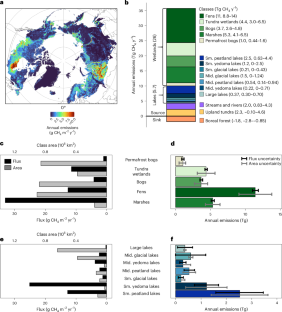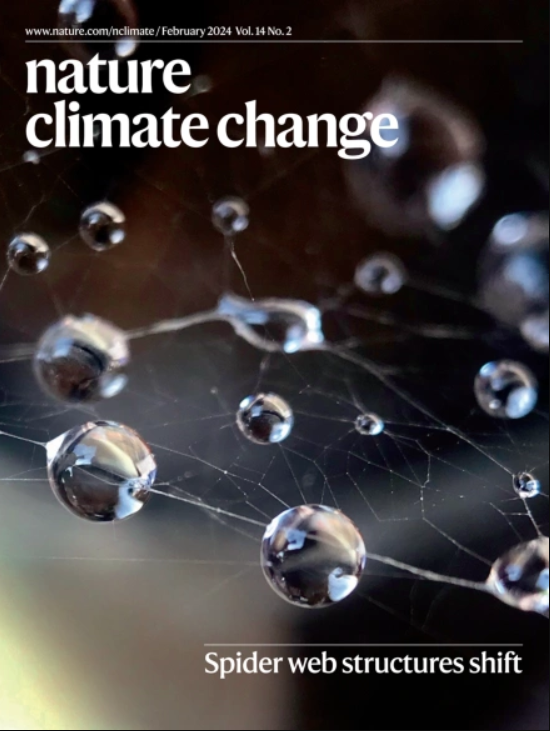Current and future methane emissions from boreal-Arctic wetlands and lakes
IF 27.1
1区 地球科学
Q1 ENVIRONMENTAL SCIENCES
引用次数: 0
Abstract
Methane emissions from the boreal-Arctic region are likely to increase due to warming and permafrost thaw, but the magnitude of increase is unconstrained. Here we show that distinguishing several wetland and lake classes improves our understanding of current and future methane emissions. Our estimate of net annual methane emission (1988–2019) was 34 (95% CI: 25–43) Tg CH4 yr−1, dominated by five wetland (26 Tg CH4 yr−1) and seven lake (5.7 Tg CH4 yr−1) classes. Our estimate was lower than previous estimates due to explicit characterization of low methane-emitting wetland and lake classes, for example, permafrost bogs, bogs, large lakes and glacial lakes. To reduce uncertainty further, improved wetland maps and further measurements of wetland winter emissions and lake ebullition are needed. Methane emissions were estimated to increase by ~31% under a moderate warming scenario (SSP2-4.5 by 2100), driven primarily by warming rather than permafrost thaw. How much methane will be emitted from the boreal-Arctic region under climate change is not well constrained. Here the authors show that accounting for distinct wetland and lake classes leads to lower estimates of current methane loss as some classes emit low amounts of methane.


北北极湿地和湖泊目前和未来的甲烷排放
由于气候变暖和永久冻土融化,北北极地区的甲烷排放量可能会增加,但增加的幅度是不受限制的。在这里,我们表明区分几个湿地和湖泊类别可以提高我们对当前和未来甲烷排放的理解。我们估计1988-2019年的净甲烷年排放量为34 (95% CI: 25-43) Tg CH4 yr - 1,主要是5个湿地类(26 Tg CH4 yr - 1)和7个湖泊类(5.7 Tg CH4 yr - 1)。由于对低甲烷排放湿地和湖泊类别(如永久冻土沼泽、沼泽、大型湖泊和冰川湖)的明确描述,我们的估计低于以前的估计。为了进一步减少不确定性,需要改进湿地地图,并进一步测量湿地冬季排放和湖泊沸腾。在中等变暖情景下(到2100年,SSP2-4.5),甲烷排放量估计将增加约31%,主要是由变暖而非永久冻土融化驱动的。
本文章由计算机程序翻译,如有差异,请以英文原文为准。
求助全文
约1分钟内获得全文
求助全文
来源期刊

Nature Climate Change
ENVIRONMENTAL SCIENCES-METEOROLOGY & ATMOSPHERIC SCIENCES
CiteScore
40.30
自引率
1.60%
发文量
267
审稿时长
4-8 weeks
期刊介绍:
Nature Climate Change is dedicated to addressing the scientific challenge of understanding Earth's changing climate and its societal implications. As a monthly journal, it publishes significant and cutting-edge research on the nature, causes, and impacts of global climate change, as well as its implications for the economy, policy, and the world at large.
The journal publishes original research spanning the natural and social sciences, synthesizing interdisciplinary research to provide a comprehensive understanding of climate change. It upholds the high standards set by all Nature-branded journals, ensuring top-tier original research through a fair and rigorous review process, broad readership access, high standards of copy editing and production, rapid publication, and independence from academic societies and other vested interests.
Nature Climate Change serves as a platform for discussion among experts, publishing opinion, analysis, and review articles. It also features Research Highlights to highlight important developments in the field and original reporting from renowned science journalists in the form of feature articles.
Topics covered in the journal include adaptation, atmospheric science, ecology, economics, energy, impacts and vulnerability, mitigation, oceanography, policy, sociology, and sustainability, among others.
 求助内容:
求助内容: 应助结果提醒方式:
应助结果提醒方式:


